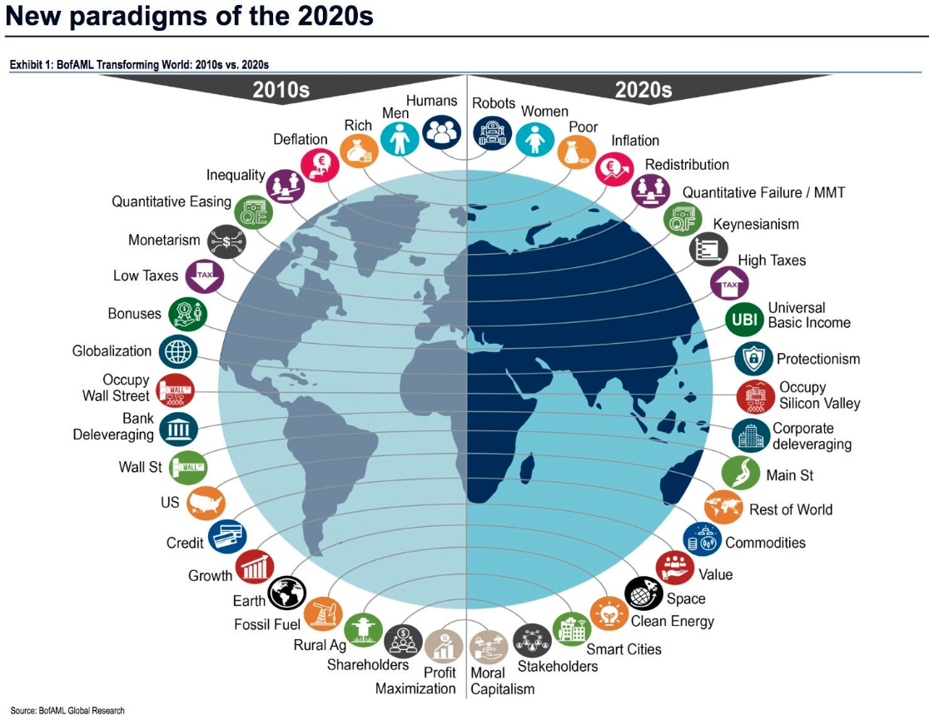Three years ago, gasoline was around $2 per gallon. The government was giving away money, like deficits did not matter. And the Federal Reserve had been stoking financial markets for over a decade with what it called Quantitative Easing. All of these fit nicely into a popular philosophy known as Modern Monetary Theory. What have we learned? A lot.

On January 16, 2020, I shared the graphic above in a presentation I gave to peers in Atlanta, GA. The premise was that we would reach an inflection point with many changes.
It has only been a few years, and many of these are already coming to pass. Some are known by different names. Some are happening more slowly. A few have disappeared, for now.
Globalization is deglobalizing now that nations and corporations prioritize security and resilient supply chains. Quantitative Easing has turned to Quantitative Tightening.
Just as an idea takes hold, and when we think we have the world figured out, things change. What has not changed? Economic cycles and progress. Stimulus led to inflation. Inflation led to higher rates. Interest rates will eventually have an impact on slowing growth.
These financial cycles encourage progress from electricity to artificial intelligence. They inspire and reward innovation. They also teach vital lessons–including the hard times. Our current cycle will do the same as it progresses.
Listen to a deep dive on the Power Up Wealth podcast.




